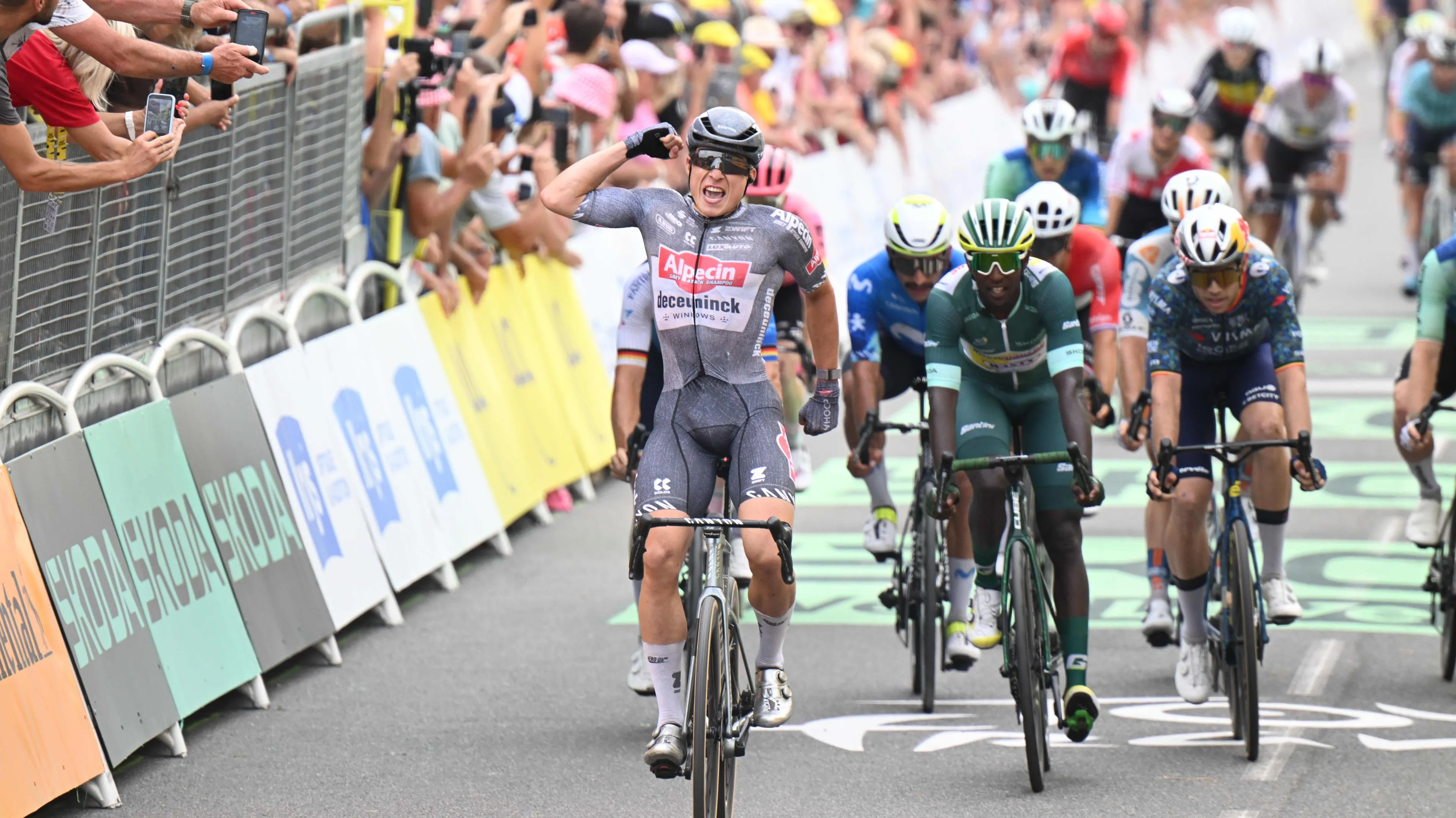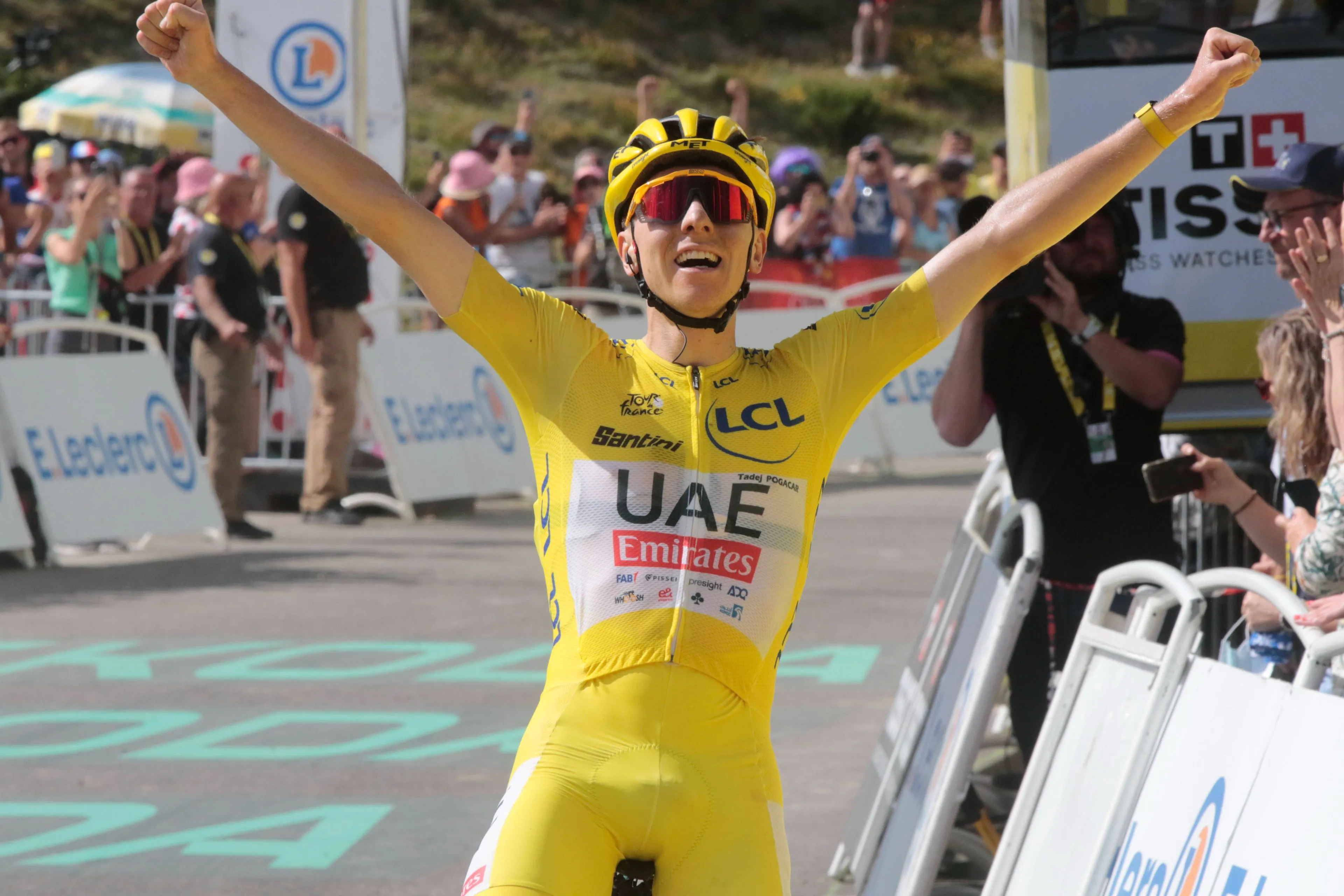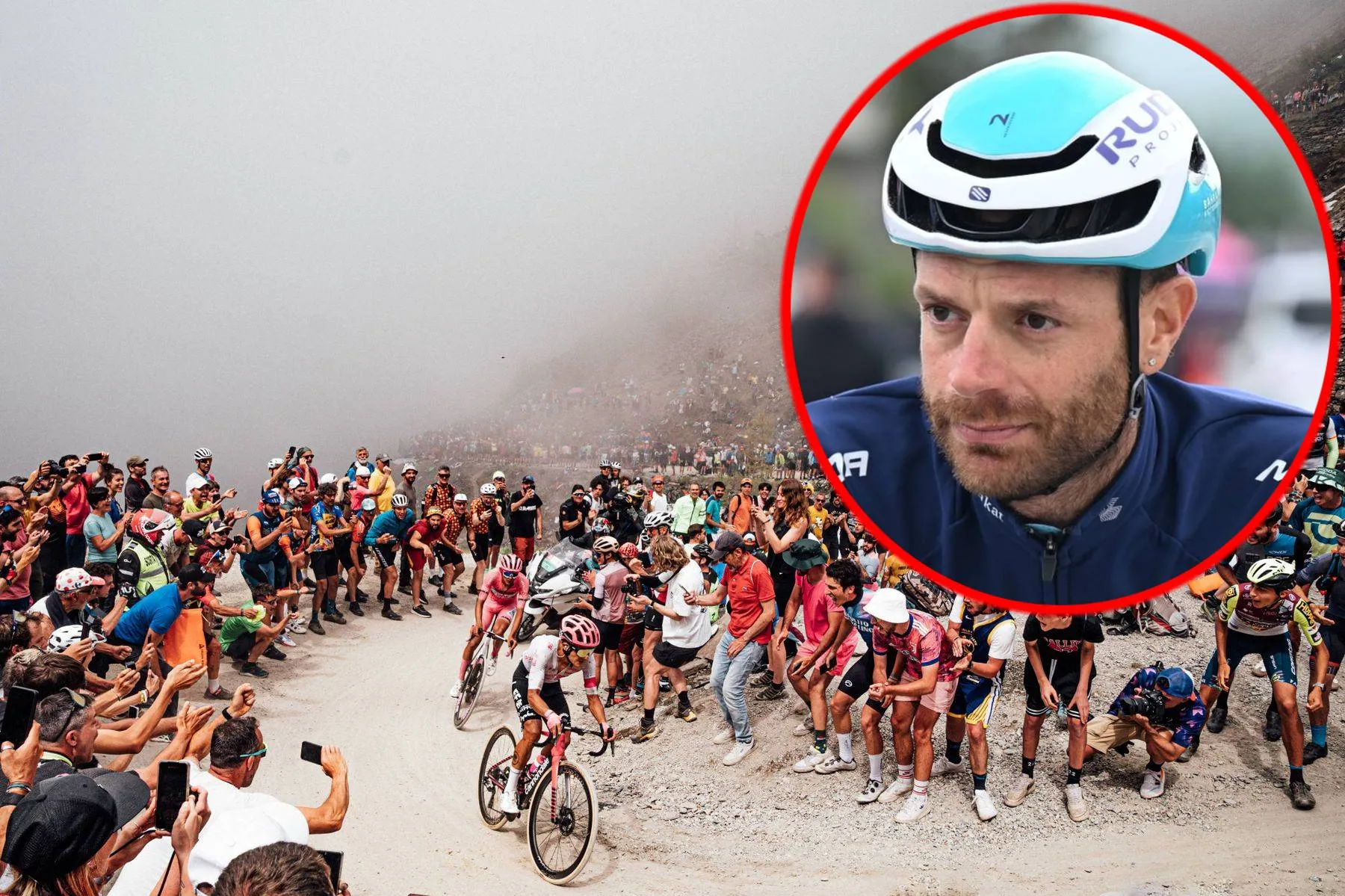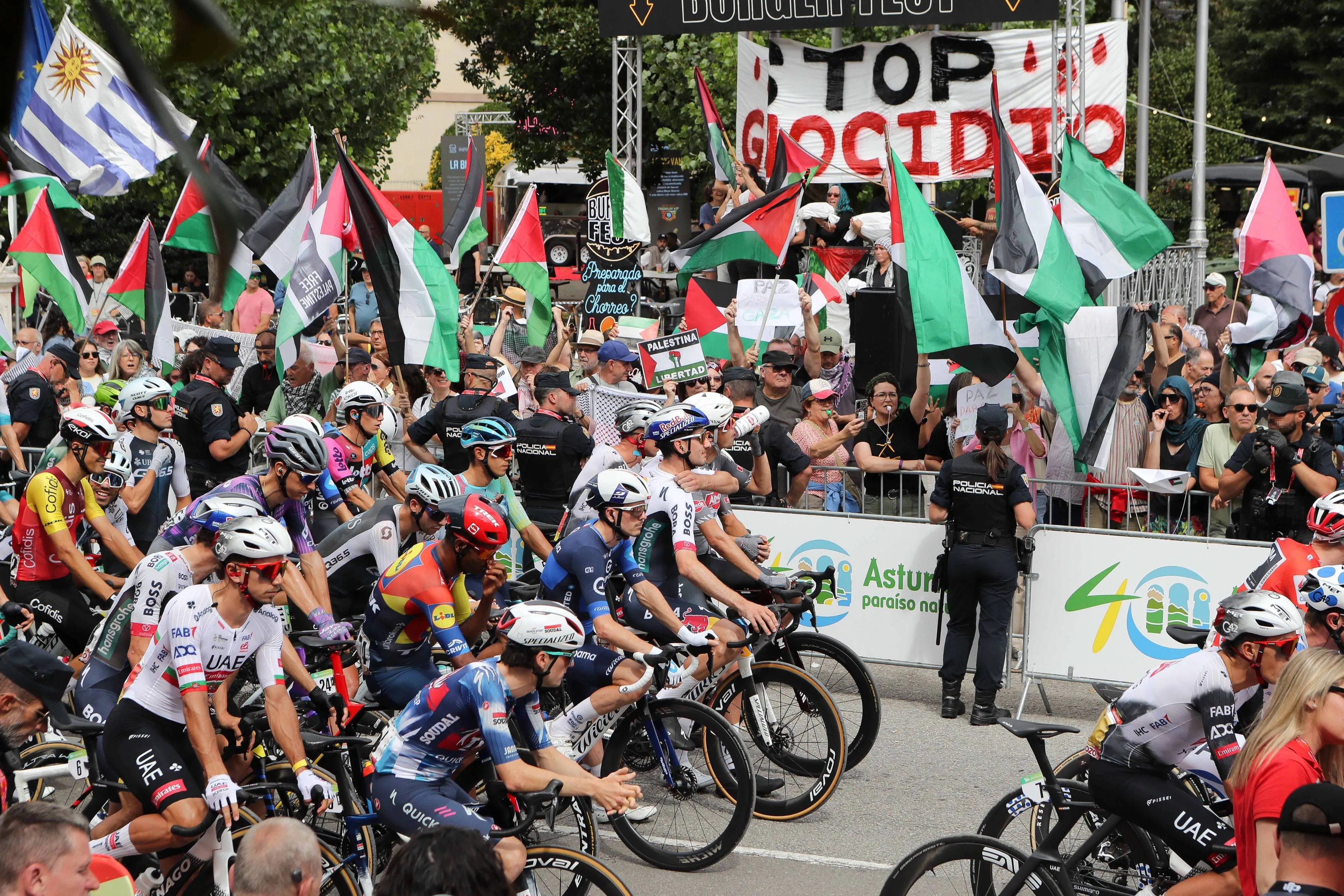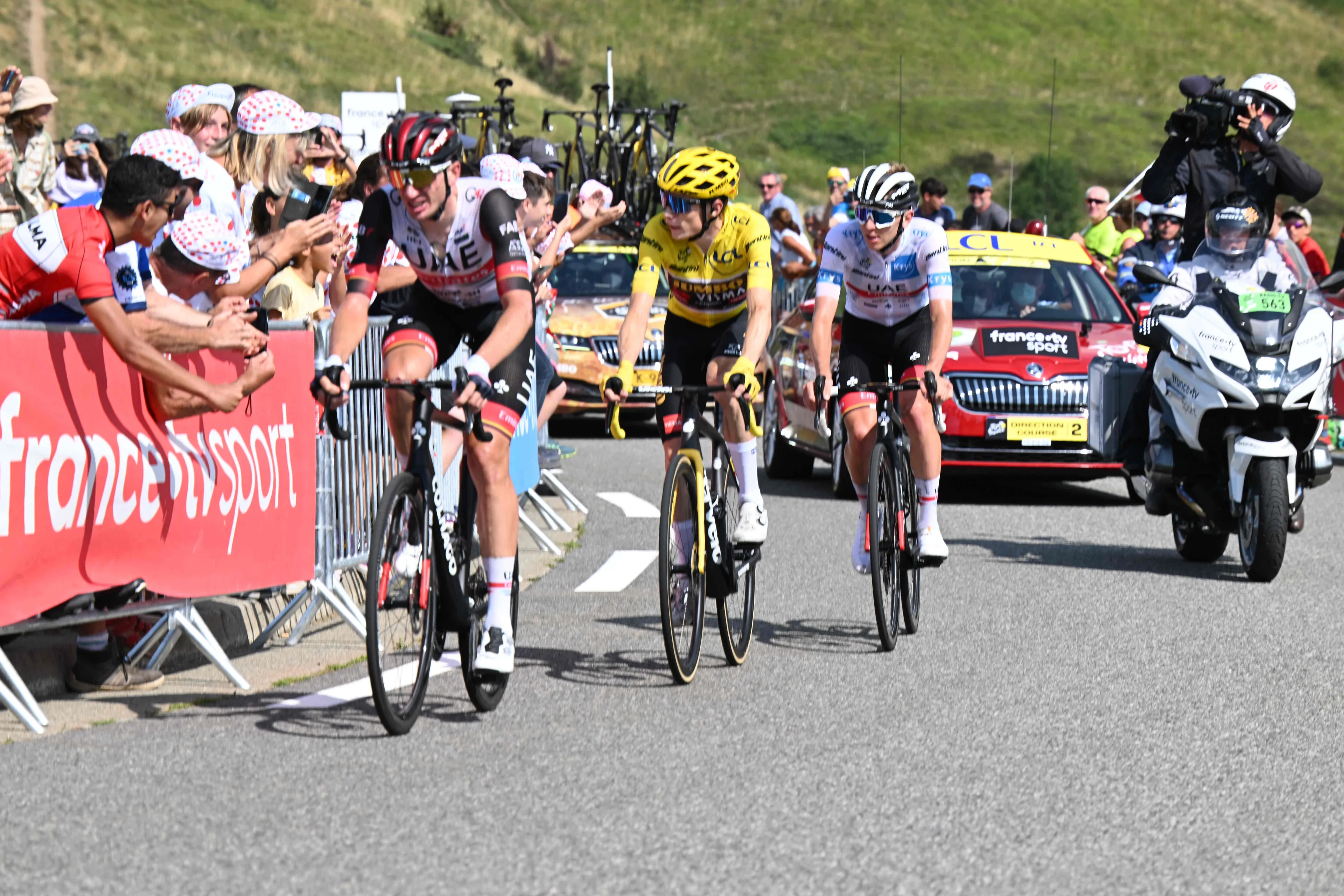ANALYSIS | Tadej Pogacar or Jonas Vingegaard: Who does the 2025 Tour de France route suit best?
CyclingWednesday, 30 October 2024 at 10:00

The 2025 Tour de France route has officially been unveiled,
and it presents a distinct departure from the mountain-heavy opening weeks that
have characterized recent editions. This time, the race will truly build up to
its high-stakes climax, with key mountain stages and time trials promising to
shape the general classification in the latter half. With Tadej Pogacar's
recent dominant win in 2024 and Jonas Vingegaard’s formidable track record in
high-altitude challenges, fans are already abuzz with speculation about who the
route may favour. Here, we dissect the 2025 parcours and examine where Pogacar,
Vingegaard, and potential challengers might gain or lose time.
The race will start in Lille on Saturday, 5th July 2025, and
end on Sunday, 27th July. Spanning 21 stages over a total of 3,320km, a slight
decrease from the 3,498km of 2024, this edition of the Tour de France is will
be the 112th in its history.
Read also
A Slow-burning start
For the general classification (GC) contenders, the action
will take time to ignite. Rather than immediate high-altitude tests, the Tour
opens with stages featuring hilltop finishes in Boulogne-sur-Mer, Mur-de-Bretagne,
and Puy Sancy. However, the first true mountain stage does not arrive until Stage
10, where the riders will tackle the Pyrenees from Ennezat to Mont-Dore. This
delayed high-mountain action deviates from recent Tour de France editions,
where GC battles have often commenced in the opening week.
The first test: Stage 5 time trial in Caen
The initial time gaps may begin to appear in Stage 5, a 33km
individual time trial in Caen. This stage favours both GC men and powerful
riders, making it a critical day for riders who excel on flat and rolling
terrain. Notably, this could serve as an early opportunity for Remco Evenepoel
to assert himself, potentially even wearing the yellow jersey for the first
time. The Belgian has demonstrated his prowess against the clock, winning a
Tour de France time trial in 2024, finishing third in the overall standings,
and clinching the young rider’s classification.
Read also
Evenepoel’s time-trialling credentials extend beyond the
Tour; he is a double Olympic champion and a back-to-back world time trial
champion. Caen’s relatively flat terrain may give him the perfect chance to
grab an early lead, although the 33km distance could also work in favour of
other powerful GC hopefuls, including Vingegaard and Pogacar, both of whom have
improved significantly in time trials over the years. Or maybe Wout van Aert
will pick up his first Tour de France stage win since 2022, which seems
ridiculous to think is so long ago.
Stage 13: mountain time trial from Loudenvielle to Peyragudes
The second time trial, Stage 13, is starkly different. This 11km
mountain time trial from Loudenvielle to Peyragudes is likely to create
significant gaps in the GC. Mountain time trials have historically delivered
drama, with both Pogacar and Vingegaard proving capable in these high-stakes
stages. Pogacar famously conquered the hilly time trial from Monaco to Nice on
the final day of the 2024 Tour, while Vingegaard has also showcased his skill
in mountain time trials, making this a potential turning point in their
rivalry.
In mountain time trials, the climbs are short, intense, and
often unforgiving, rewarding climbers who can maintain a high power output over
steep gradients. This stage could play in favour of Pogacar, who has excelled
in explosive, short climbs. However, with Vingegaard’s well-documented ability
to withstand prolonged efforts in high-altitude terrain, he could certainly be
in contention for the win here, as of course will the likes of Remco Evenepoel
and Primoz Roglic.
Read also
Stage 16: The return of Mont Ventoux
The true high point of the 2025 Tour will likely come on Stage
16, a 172km journey from Montpellier to Mont Ventoux. It’s the first time this legendary
climb will appear in the Tour since Vingegaard famously dropped Pogacar here in
2021, marking the Dane’s emergence as a legitimate GC contender. Riding in the
young rider’s jersey while Pogacar was in yellow, Vingegaard was unexpectedly
thrust into Jumbo-Visma’s leadership role after Primoz Roglic crashed out
earlier in the Tour. On Ventoux, Vingegaard did what just about no one had been
able to achieve until then: he dropped Pogacar on the climb, establishing
himself as a formidable force.
Vingegaard’s display on Mont Ventoux in 2021 set the stage
for his consecutive Tour wins in 2022 and 2023, as he put the first dents in
Pogacar’s armour. Whilst Pogacar was back with the ultimate bang in 2024, this
stage will undoubtedly be psychologically significant for both Pogacar and
Vingegaard, as memories of that decisive moment in 2021 still linger. The
slopes of Mont Ventoux, unforgiving and steep, will likely favour Vingegaard’s
ability to maintain a steady rhythm on the long climbs.
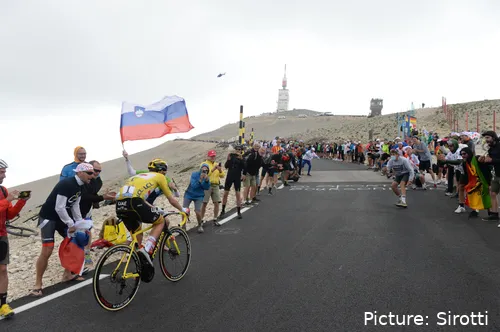
Mont Ventoux has been the stage of epic Tour de France battles
Pogacar’s nemesis: Col de la Loze
As Pogacar and Vingegaard brace for another showdown, one
climb stands out as potentially decisive: the Col de la Loze. Fancy a bit of
Col de la Loze, Tadej? Nope, we didn’t think so. This is the mountain that saw
the worst day of his career back in 2023.
Indeed, the Col de la Loze is a mountain that haunts
Pogacar. In the 2023 Tour, he suffered a monumental collapse on its punishing
gradients. In a gruelling queen stage, Felix Gall claimed victory from the
breakaway with a solo attack, but the real story was Pogacar’s struggles. The
Slovenian cracked early in the climb’s toughest section, losing substantial
time to Vingegaard, over six minutes wich all but secured Vingegaard’s GC
victory.
Read also
The Col de la Loze had been a brutal test, with the riders
facing over 5,400 meters of climbing across a day filled with challenging
gradients. Visma executed a perfect strategy, gradually tightening the noose
until Pogacar cracked. The climb’s unrelenting nature, with gradients exceeding
20% in sections, seems to exploit Pogacar’s vulnerabilities.
Notably, Pogacar’s challenges on the Col de la Loze were not
a one-off. He also lost time on this climb during the 2020 Tour, where he ceded
17 seconds to Roglic. While this was not as significant as his 2023 setback,
the climb has consistently proved to be one of Pogacar’s weak points. As the
2025 route was unveiled, fans immediately began speculating whether the
inclusion of this daunting ascent would once again play into Vingegaard’s
hands.
The return of the Champs-Elysees
After the disruptions caused by the 2024 Olympics in Paris,
which forced the Tour to conclude in Nice, the 2025 edition will see a return
to tradition with a final sprint down the Champs-Elysees. The iconic finish
will cap off what promises to be an intense battle between Pogacar and
Vingegaard, with potential surprises from other contenders like Evenepoel and
possibly Roglic.
Read also
The combination of the Col de la Loze and Mont Ventoux seems
designed to test riders on two very different types of climbs, which may favour
Vingegaard’s strengths. Long, consistent gradients typically benefit riders
with high threshold power, a trait that has helped Vingegaard dominate in
previous Tours. Pogacar, known for his explosive style and punchy
accelerations, may find these extended ascents more challenging.
Can Remco Evenepoel move closer to the leading duo?
The 2025 Tour route also presents opportunities for
outsiders to shake up the GC, with Remco Evenepoel particularly well-suited to
the varied time trials. His time-trialling prowess could make him a wildcard in
the battle between Pogacar and Vingegaard. Should he secure an early lead in
Caen, Evenepoel could force the Slovenian and Dane to chase, possibly leading
to tactical complexities later in the race. The Belgian was much improved in
the high mountains earlier this season, and is certainly the most likely rider
to challenge Pogacar and Vingegaard, who have won the last five editions of the
Tour between them.
Read also
Ultimately, the 2025 Tour de France route on paper favours
Jonas Vingegaard’s strengths more than it does Pogacar, but if Pogacar continues
his 2024 form then the Dane will need to be in his best ever shape to stand a
chance. Vingegaard’s proven ability on long, steady climbs like Mont Ventoux
and the Col de la Loze, combined with his consistent time-trial performance,
positions him with a chance to regain his throne. While Pogacar will
undoubtedly launch his own attacks, especially on shorter, steeper ascents, his
struggles on the more demanding, high-altitude climbs suggest he may face
challenges in repeating his 2024 success. Of course, he may also blow everyone
away once again.
Fans are already marking their calendars for what promises
to be another thrilling showdown between cycling’s top two GC riders. With
Evenepoel in the mix and Roglic hopefully too, the 2025 edition of the Grand
Boucle is shaping up to be an unforgettable clash of cycling titans.
claps 6visitors 4
Just in
Popular news
Latest comments
- He couldn't finish in the top 100 at Unbound Gravel. He might be able to hold the wheel in a cat 3 crit but even that's debatable. Not being facetious.paule18-12-2025
- It isn't just the 5 million euros a year. It's also the never-ending hospital bills. Two weeks to go for Sylvan Adams to get out from under this mess.paule18-12-2025
- LOL, Del Toro, while very strong, is not currently racing at a level higher than Remco or Lipowitz. He can be by 2027 though and probably will be. You are discounting Remco's season this year, which his underperformance was caused by a crash that would have retired most people. He will be very strong this coming year as long as he keeps the rubber side down.awp18-12-2025
- It would be nice to see him have a healthy season and do well.JoeyB18-12-2025
- Aka the ‘junk drawers’Onepiece18-12-2025
- Marginal stainsOnepiece18-12-2025
- Business in the front. Farty in the backOnepiece18-12-2025
- Big problem. 2022 Jonas and Primoz were on a similar level to Tadej. 2026 Remco and Florian likely won’t be close to Tadej’s level once the road leans uphill. Good luck trying though!mobk18-12-2025
- gravel maybe? it is the only thing competitive that would make sense.mij18-12-2025
- many had Oier Lazkano as the man for spring, but he was a fraud. this is probably what hurt their spring more than anything.mij18-12-2025
Loading
1 Comments

